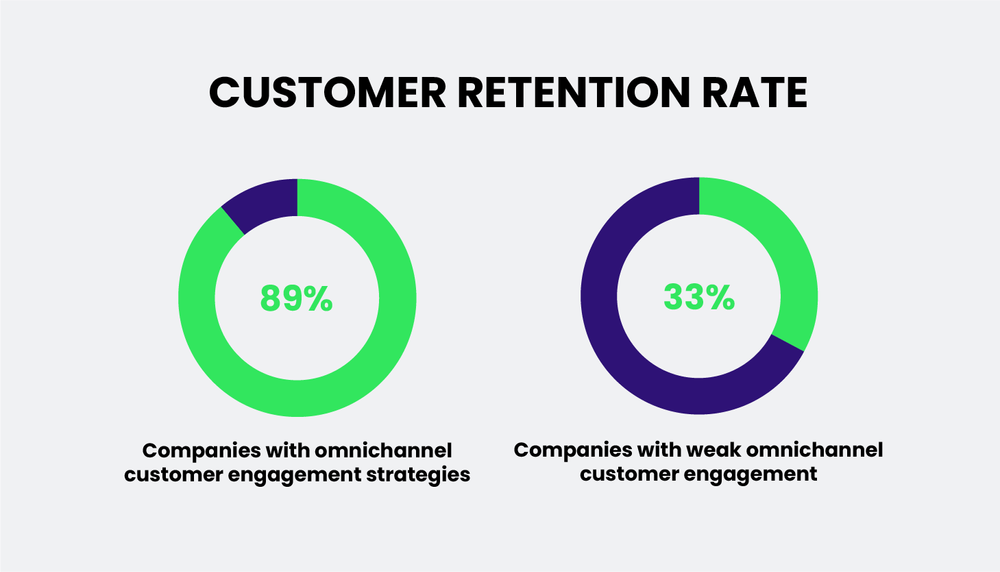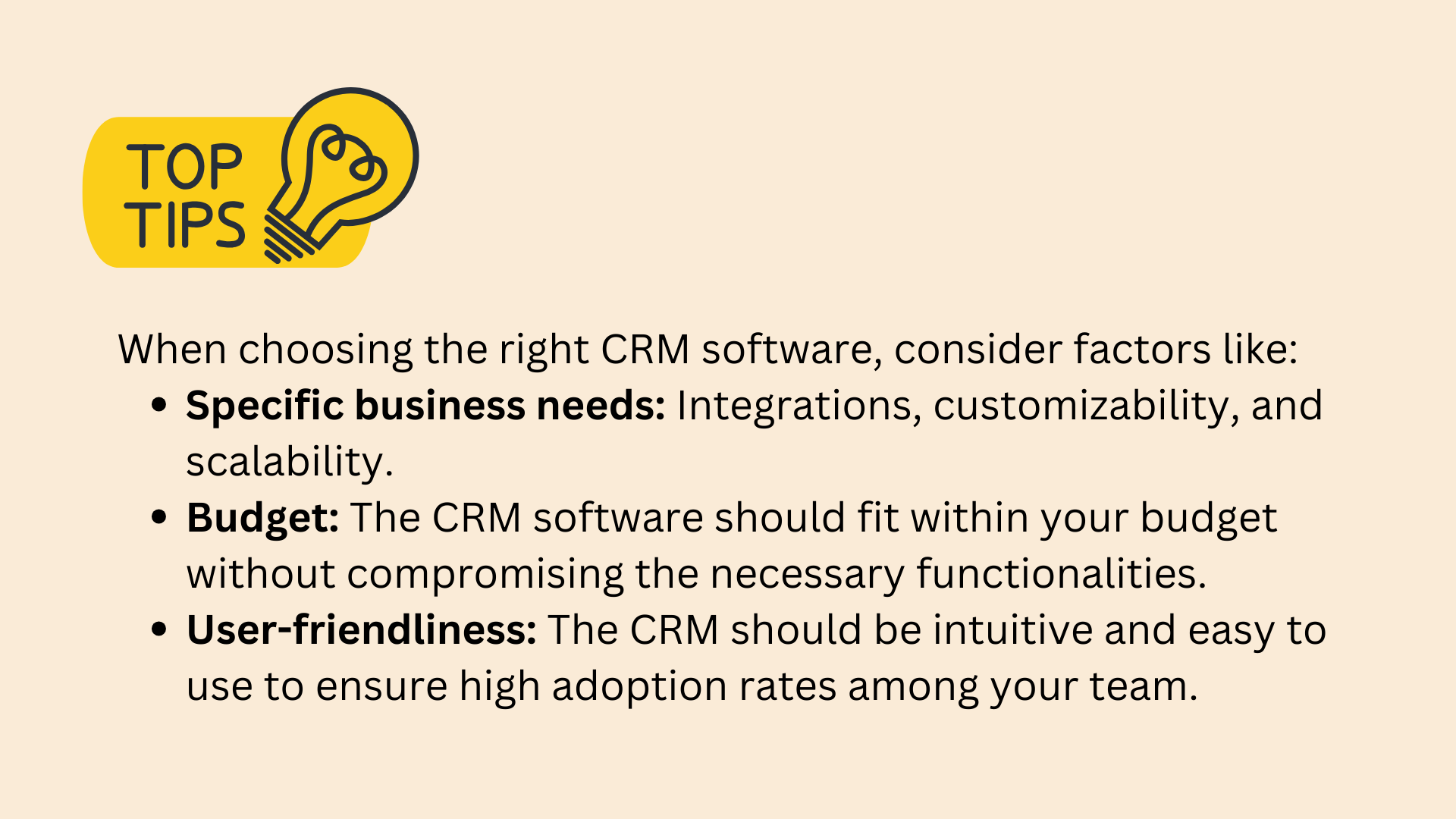Introduction
In today's fast-paced, digitally dominated business landscape, companies across all industries face the challenge of keeping up with soaring customer expectations while navigating digital transformation.
One key to success in this new paradigm is the strategic fusion of Customer Relationship Management (CRM) and Digital Experience (DX).
By digitalizing customer relationships, businesses can unlock the full potential of their customer engagement strategies and stay ahead of the curve.
This comprehensive blog post will explore the benefits, challenges, and trends around CRM and DX, illustrating why businesses must prioritize digitalizing their customer relationships for long-term growth and success.
The Benefits of Digitalizing Customer Relationships
Digitalizing customer relationships by integrating CRM with DX provides numerous benefits that can significantly enhance your business performance.
Some of the key advantages include the following:
#1 Enhanced Personalization
Personalization is vital in today's customer-centric business environment. According to an Epsilon survey, 80% of consumers are more likely to make a purchase when brands offer personalized experiences.
By leveraging data captured through CRM and digital channels, businesses can create unique, tailored experiences for customers at every touchpoint.
This level of personalization leads to increased customer satisfaction, improved loyalty, and ultimately—repeat business.
#2 Improved Customer Insights
Digitalizing customer relationships can also give businesses valuable insights into their customers' behavior.
For instance, a study by McKinsey found that businesses that leverage customer behavioral insights outperform peers by 85% in sales growth and more than 25% in gross margin.
When CRM and DX are fully integrated, businesses can benefit from centralizing all customer data.
This unified understanding of customer behaviors, preferences, and sentiment allows organizations to make informed decisions and shape their marketing, sales, and customer support strategies.
#3 Optimized Customer Journey
Digital channels have provided customers with virtually unlimited options, making the customer journey more complex than ever.
Businesses with strong omnichannel strategies retain on average 89% of their customers, compared to 33% for companies with weak omnichannel strategies.
By unifying CRM and DX, businesses gain a holistic view of the customer journey, enabling them to optimize each stage, from acquisition and engagement to conversion and retention.

#4 Increased Operational Efficiency
Digitalizing customer relationship management not only benefits customers but also improves internal efficiency.
With a centralized CRM system, employees can easily access relevant customer data, collaborate, track progress, and automate tedious manual tasks, allowing them to focus on higher-value business objectives.
#5 Economic Gains
Investing in CRM has an impressive potential return on investment (ROI).
A Forrester study on Salesforce CRM found a potential three-year ROI of 299%, with most companies recovering their costs within four months after implementation.
Such economic gains can be attributed to increased sales, reduced labor hours, and improved customer service efficiency.
The Challenges of Digitalizing Customer Relationships
Transitioning to a digitalized CRM and DX ecosystem can present several challenges.
Businesses need to be prepared to address these issues to ensure a smooth and effective integration.
#1 Data Security and Privacy Compliance
As businesses collect, store, and manage large volumes of customer information, data security and privacy become paramount.
Organizations must adhere to regulations such as GDPR and CCPA, ensuring stringent protection of their customers' personal data.
#2 Technological Complexity
The implementation of a comprehensive CRM and DX strategy demands substantial technological know-how.
From selecting the right software and tools to training employees, businesses need to invest in technical expertise and resources to set up and maintain their CRM and DX solutions.
#3 Change Management
Integrating CRM and DX requires a change in the organizational culture, as traditional siloed business units must work together more collaboratively.
This can lead to resistance and challenges during implementation—the importance of effective change management tactics, such as training, communication, and leadership engagement, cannot be overstated.
Trends Shaping CRM and Digital Experience
Let's examine several CRM and DX trends predicted to have significant impacts on businesses and customer relationships in the coming years.
#1 Artificial Intelligence and Machine Learning
AI-powered CRM solutions are increasingly transforming the way businesses manage customer interactions.
Through intelligent analytics, machine learning, and natural language processing, AI can help organizations better understand customer preferences, predict future behaviors, and provide proactive, personalized assistance.
#2 Omnichannel Integration
Achieving seamless integration across all channels—physical and digital—is becoming critical for delivering a consistent customer experience.
Being truly omnichannel requires a unified CRM system that provides businesses with a single, holistic view of customer interactions across all touchpoints.
#3 Customer Data Platforms (CDPs)
As businesses grapple with large volumes of data from various sources, Customer Data Platforms (CDPs) are emerging as a key tool for centralizing, organizing, and analyzing customer information.
CDPs can help businesses gain valuable insights that drive personalized marketing, sales, and customer support strategies.
#4 Voice-Enabled Interfaces
The use of voice-enabled technologies—the likes of Apple Siri, Google Assistant, and Amazon Alexa—has dominated headlines for several years now, and the trend is set to continue in the CRM and DX spaces.
As per a report by OC&C Strategy Consultants, voice shopping is set to jump to $40 billion by 2022.
Integrating voice-powered capabilities into existing CRM solutions can enhance customer self-service options, streamline internal workflows, and provide new customer engagement opportunities.
#5 Automation and Chatbots
As AI continues to progress, expect to see more automation and chatbots in the CRM and DX spaces.
Automation and chatbots can handle routine tasks, freeing up personnel to focus on more complex issues, thus enhancing operational efficiency.

Why Businesses Must Digitalize Their Customer Relationships
There are four primary reasons why companies should prioritize the digitalization of their customer relationships:
- Customer Experience: Success in today's competitive landscape hinges on businesses providing exceptional customer experiences at every touchpoint. Digitalizing customer relationships facilitates consistent, personalized interactions across all channels, driving customer satisfaction and loyalty.
- Operational Efficiency: Integrating CRM and DX can greatly streamline workflows and optimize resources, ultimately improving overall business efficiency. By automating manual tasks, employees are free to focus on higher-value activities that drive growth.
- Data-Driven Decision Making: A unified CRM and DX system provides invaluable insights into customer behavior, preferences, and sentiment. Leveraging this data can help businesses craft targeted marketing campaigns, sales initiatives, and customer support strategies that resonate with their audiences.
- Agility and Innovation: Digitalizing customer relationships paves the way for organizations to adapt quickly to changing market conditions, customer preferences, and technological advancements. Investing in digital CRM and DX transformation helps businesses thrive in today's fast-paced, increasingly digital world.
How to Implement a CRM and Digital Experience
Delivering impeccable customer experiences and managing intricate customer relationships effectively are two cornerstones for any successful modern business.
In this endeavor, the integration of CRM (Customer Relationship Management) and Digital Experience (DX) becomes crucial.
These how you walk through the efficient way to implement CRM and DX for maximum business impact:
Step 1: Understanding Your Needs & Goals
First and foremost, understand why your business needs a CRM system.
Do you wish to improve customer engagement? Streamline workflow processes? Or enhance marketing efficiency?
Having a clear vision will help you set realistic goals and decide what kind of CRM and the extent of digital experience you aim to implement.
Step 2: Selecting the Right CRM
There is a wide array of CRM solutions available in the market – from simple contact management systems to comprehensive full-suite CRM applications.
Several popular CRM software solutions are Sanka, Salesforce, Microsoft Dynamics, HubSpot, and Zoho CRM.

Step 3: Mapping the Customer Journey
To deliver a tailored digital experience, it’s essential to map out your customer's journey.
This involves identifying touchpoints where customers interact with your business—for example, website visits, social media interactions, sales calls, or in-person visits.
Once you identify these touchpoints, you can design optimal digital experiences for each.
Step 4: Integrating DX Tools
There are several tools specifically designed to enhance DX such as content management systems, web engagement platforms, and user feedback tools.
When integrated with CRM, these tools allow businesses to deliver personalized experiences across different digital touchpoints.
These tools should also be easy to use and flexible enough to manage your digital content, incorporate customer feedback, and offer unique, interactive experiences for your customers.
Step 5: Data Centralization and Analysis
A key advantage of CRM and DX integration is data centralization. Collect data from your CRM and DX tools to see all customer interactions in one place.
This centralized data repository will inform better decision-making in various departments like sales, marketing, and customer service.
Next, leverage this data for analysis. Use your CRM’s built-in analytics tool, or use standalone data analysis tools to gain insights.
This analysis can highlight areas for improvement and uncover opportunities for enhanced personalization.
Step 6: Implementing the CRM & DX
With your selected CRM solution, mapped customer journey, DX tools, and data centralization in place, it's time to implement.
Start with a pilot phase to identify any potential issues and rectify them.
Involve all stakeholders during the implementation process, especially those who will be using the system daily.
Regular feedback and insights from these users are essential to ensure the CRM and DX are tailored to your business needs.
Remember that effective CRM usage is not solely about technology; it's also about people and processes.
Providing sufficient training to your team and promoting a user-friendly CRM culture is key to ensure seamless integration.
Step 7: Continuous Evaluation & Improvement
After implementing your CRM and DX, it's crucial to conduct continuous monitoring and evaluation.
Track your performance against the goals you set at the beginning. Identify areas that might need tweaking or complete overhaul to optimize the return on your investment.
Customer feedback is also key to this improvement process. Keep channels open for your customers to share their digital experience and feedback.
This practice helps to improve your offerings continually and ensure a customer-centric CRM and DX.
Conclusion
In conclusion, the integration of CRM and Digital Experience is crucial for businesses striving to deliver exceptional customer experiences while remaining competitive in the rapidly evolving digital era.
By embracing this transition, organizations can reap significant benefits from enhanced personalization, improved customer insights, optimized customer journeys, and streamlined workflows.
Though challenges like data security, technological complexity, and change management should be adequately navigated, the potential rewards far outweigh the obstacles.
Keeping an eye on emerging CRM and DX trends—like AI, omnichannel integration, and voice interfaces—will ensure that your investment in digitalizing your customer relationships remains relevant, effective, and growth-oriented for years to come.








